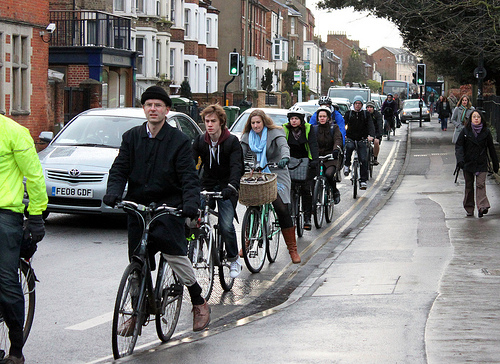Guest Blog by @CarolineFinch
Cross Fertilising ‘Injury Prevention’ journal (IP) and BJSM

Sports injury epidemiologists with a methodological bent will benefit from two papers published in the October issue of the BJSM’s sister journal, Injury Prevention.
In the first paper, Davie et al. discuss how to identify re-admissions for the same injury from hospital discharge data. Although only the tip of the iceberg for sports injury occurrences, hospital admissions data can be a good source of information about severe sports injuries. Some people get admitted to hospital for injury several times within a specified period of time and this could indicate either (i) recurrent injuries (each new episode of care is for treatment of a new occurrence of the same type of injury), (ii) people at risk of multiple injuries (new episodes of care for different injuries sustained in different injury events, because of the inherent risks and hazards they are exposed to) or (iii) previous treatment failure/incomplete rehabilitation (leading to episodes of care relating to ongoing treatment of the same injury). The paper concludes that to identify-readmissions properly it is important that injury data collections routinely record a unique person identifier and the date of injury, as well as the admission and discharge dates for the episodes of care.
In the sports medicine context, it is alarming how few sports injury data collections collect all this information and our modelling of sports injury incidence rates in the future would benefit from attention to these issues.
The second paper I highlight is a study protocol for a case-crossover design to better understand the link between bicyclists injuries and the cycling environment by Harris et al. In case-crossover studies are particularly useful for adjusting for exposures to risk factors that are transient (i.e. differ) over time and place but which are also associated with distinct acute events. In injury research, this study design has most commonly been applied to road crash studies in which cases are injured road users and people serve as their own controls where the control condition (i.e. with no injury) is at a different point in time when the road conditions are different (e.g. traffic density, weather conditions, earlier in the day, on a different part of the route, etc). The majority of epidemiological risk factors studies in the sports injury area do not consider transient risk factors, but rather assess injury risk in relation to baseline factors. There could be an opportunity to consider how risk factors themselves might vary over a playing season if case-crossover study designs were considered. This paper gives one example of how this approach could be included into a study.
*************************************************
Caroline Finch is an injury prevention researcher from the Australian Centre for Research into Injury in Sport and its Prevention (ACRISP) within the Monash Injury Research Centre, Monash University, Australia. She specialises in implementation and dissemination science applications for sports injury prevention. She is the Senior Associate Editor for Implementation & Dissemination for the British Journal of Sports Medicine and a member of the Editorial Board of Injury Prevention; both journals are published by the BMJ Group.
Follow Caroline on Twitter @CarolineFinch